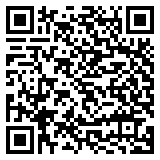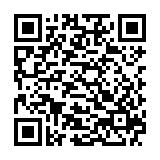In a world marked by diversity and globalization, effective communication is essential. Professional interpretation serves as a vital tool that bridges language barriers, enabling meaningful interactions across cultures. This skill is not only about translating words but also about conveying context, emotion, and intent, which can significantly impact personal and professional relationships.
The demand for professional interpreters has increased in various fields, including healthcare, business, and legal sectors. As organizations strive to connect with diverse clients and communities, the role of interpreters becomes crucial in ensuring that messages are accurately conveyed and understood.
Understanding the nuances of professional interpretation can transform how individuals and businesses operate in a globalized environment. By recognizing its importance, stakeholders can better appreciate its potential to enhance collaboration and mutual understanding in an increasingly interconnected world.
The Role of Professional Interpretation in Bridging Communication Gaps
Professional interpretation plays a crucial role in facilitating effective communication. It addresses language barriers, enhances accessibility, and fosters social inclusion for diverse populations.
Overcoming Language Barriers
Language barriers create significant communication gaps, affecting the ability to share information accurately. Professional interpreters possess the skills to translate spoken language in real-time, ensuring that messages are conveyed clearly. This service is essential in settings such as healthcare, legal proceedings, and business negotiations, where misunderstandings can have serious consequences.
By bridging the gap between different languages, interpreters empower individuals who may be limited by their language skills. They provide vital support in multilingual environments, helping everyone participate fully. This leads to improved understanding and cooperation among diverse groups.
Enhancing Accessibility Across Contexts
Accessibility is a fundamental aspect of effective communication. Professional interpreting services ensure that people with varying language proficiencies can access vital information in settings like medical appointments or community meetings.
Such services include on-site interpretation, video remote interpretation (VRI), and telephone interpretation. Each method has its advantages, allowing for flexibility and immediacy. By providing these options, interpreters help reduce barriers in various contexts, making information more readily available.
Furthermore, accessibility is not limited to language alone. It also encompasses the formats in which information is delivered, allowing for clearer understanding by all parties involved.
Supporting Social Inclusion and Equal Access
Social inclusion is integral in creating equitable environments. Professional interpreters play a key role in ensuring equal access to services for individuals with limited English proficiency. This support fosters participation in community events, educational programs, and public services.
Interpreting services help to create a welcoming atmosphere where everyone can express themselves. They promote understanding and respect among diverse cultures, enhancing social cohesion. By maintaining open lines of communication, interpreters facilitate collaboration and integration in society.
In summary, professional interpretation is vital for bridging communication gaps, contributing to a more inclusive and equitable world.
Innovations and Best Practices in Professional Interpretation
Professional interpretation is evolving through technological advancements and cultural awareness. Key developments focus on enhancing user experience and ensuring effective communication across diverse settings.
The Integration of AI and Technology
AI and technology are streamlining the interpretation process. Advanced tools, such as real-time translation applications, assist interpreters in delivering accurate messages instantly. This integration helps in managing multilingual conferences and public discussions efficiently.
Automated speech recognition and machine learning enhance the quality of interpretation by providing contextually relevant translations. These technologies can analyze linguistic diversity, thereby improving adaptability in various settings, from legal justice to medical consultations.
Navigating Cultural Nuances and Context
Understanding cultural context is vital for effective interpretation. Interpreters must recognize gestures, body language, and local customs that influence communication. This cultural empathy allows professionals to tailor their interpretation strategies, ensuring clarity in diverse cultural scenarios.
Training programs increasingly emphasize cultural nuances alongside linguistic skills. This focus helps interpreters navigate complex political processes, fostering better communication during globally significant discussions.
Adapting to Diverse Settings and Needs
Flexibility is essential in professional interpretation, as the needs of clients vary widely. Interpretation services today are used in diverse environments, such as business strategy meetings, healthcare consultations, and international conferences.
Interpreters must adapt swiftly to different communication styles and content types. Successful adaptation also hinges on collaboration with clients to understand specific requirements, ensuring that the human touch is emphasized in every interaction. This approach enhances the effectiveness of interpretation, making it vital for fostering inclusive dialogue.





0 Comments